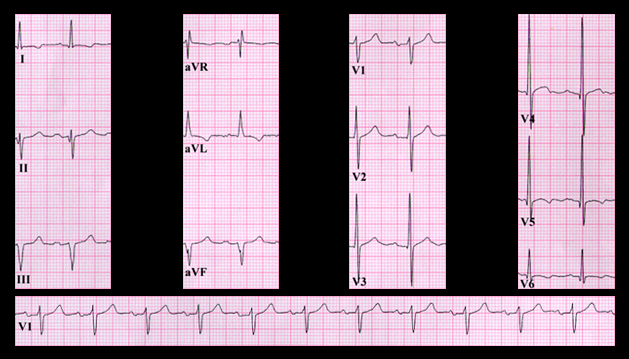
This tracing was recorded from the same patient four hours later, after the serum potassium had been lowered to 4.2 mm/l. There is now sinus rhythm with 1:1 AV conduction. The P waves are readily apparent, and the PR interval is 0.16 seconds. The QRS complexes are 0.90 seconds in duration and the Q wavs in leads 2, 3, and aVF suggest the prior inferior wall infarction.
